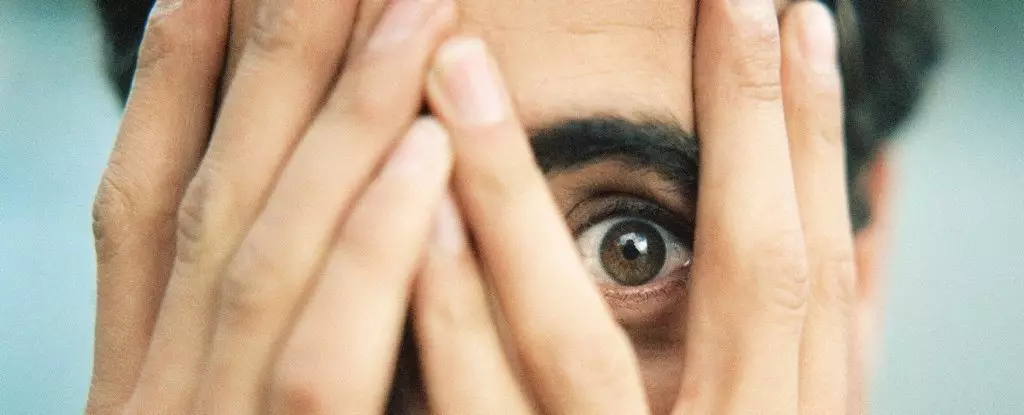In everyday social interactions, we often find ourselves bothered by the seemingly innocuous behavior of others—specifically, their fidgeting. For many, the sight of someone tapping their foot or twisting their fingers can lead to feelings of annoyance or discomfort. But what drives these reactions? Research has unveiled the term “misokinesia,” which encapsulates the complex emotional responses associated with the observation of repetitive movements in others. This peculiar phenomenon, which remarkably affects one in three individuals, blends elements of psychology and visual perception, highlighting a challenge that remains underexplored until recent scientific inquiries.
Misokinesia is often likened to misophonia, a condition characterized by intense emotional reactions to specific sounds. However, misokinesia is centered around visual stimuli—specifically, the repetitive movements of others. Sumeet Jaswal, a psychologist associated with research from the University of British Columbia, emphasizes that while the emotional responses to auditory stimuli have seen ample attention, the visual counterpart requires further understanding. Misokinesia can manifest as a visceral discomfort tied to the sight of another person’s seemingly trivial movements, which can provoke anxiety, frustration, and anger in certain individuals.
Jaswal and his research team embarked on a comprehensive investigation into misokinesia, enrolling over 4,100 participants from various backgrounds. Their findings indicated that approximately one-third of those surveyed reported experiencing some level of sensitivity to fidgeting behaviors. This insight positions misokinesia not just as a quirk of certain individuals, but as a widespread social challenge that affects a significant segment of the population.
Individuals affected by misokinesia often find their social experiences altered—what should be a simple gathering may become a minefield of stress and discomfort due to the behaviors of those around them. The emotional fallout often includes diminished enjoyment in social situations and can lead to avoidance behaviors, where individuals shy away from gatherings altogether to sidestep the potential distress caused by fidgeting. Todd Handy, another psychologist involved in the study, describes a variety of negative emotions that can surface, preventing sufferers from fully engaging in their environments.
The correlation between misokinesia and misophonia highlights a fascinating interplay between auditory and visual stimuli. While some individuals may encounter distress from both visual and auditory distractions, others might find them to be separate experiences. Understanding the nuances within this spectrum of sensitivity can aid in addressing the emotional challenges that individuals face when experiencing misokinesia.
Potential Underpinnings of Misokinesia
An intriguing question arises: Why do certain people react so strongly to the relatively minor movements of others? Initial hypotheses suggest a connection to heightened visual attentional mechanisms. However, early investigations have not firmly established that these visual reflexes are the root cause of misokinesia. Consequently, researchers have begun exploring alternative explanations, one of which involves the role of “mirror neurons.”
These specialized neurons activate not just when one engages in movement, but also when witnessing others in motion. The idea that observing someone’s fidgeting could trigger empathetic responses—or even sympathetic anxiety—opens new avenues for understanding the psychological landscapes of those affected by misokinesia. For those who experience discomfort in response to fidgeting, it may not merely be an annoyance but a mirrored experience of the fidgeter’s own possible nervousness or stress.
The Path Forward: Research and Awareness
As the body of research surrounding misokinesia expands, it becomes increasingly clear that this phenomenon deserves greater attention. While the current studies provide a substantive first step, much remains to be explored regarding the underlying mechanics of misokinesia and its implications in social contexts. Researchers aim to delve deeper into the cognitive processes involved, including the nuances of emotional mirroring and empathy that could elucidate this perplexing phenomenon.
Awareness and understanding are paramount, especially for those who deal with the debilitating effects of misokinesia. Acknowledging that one is not alone in their discomfort can be the first step towards coping mechanisms that allow for more enjoyable interactions in various social and professional settings.
Misokinesia presents an interesting convergence of human psychology and social behavior, raising critical questions about empathy, emotional responses, and personal sensitivities. As we navigate our social worlds, fostering an understanding of misokinesia may not only enhance individual experiences but can cultivate a more empathetic communal environment. Recognizing these subtleties invites a collective acknowledgment of our shared psychological struggles, encouraging open discussions about our sensitivities and promoting healthier social interactions in the future.


Leave a Reply